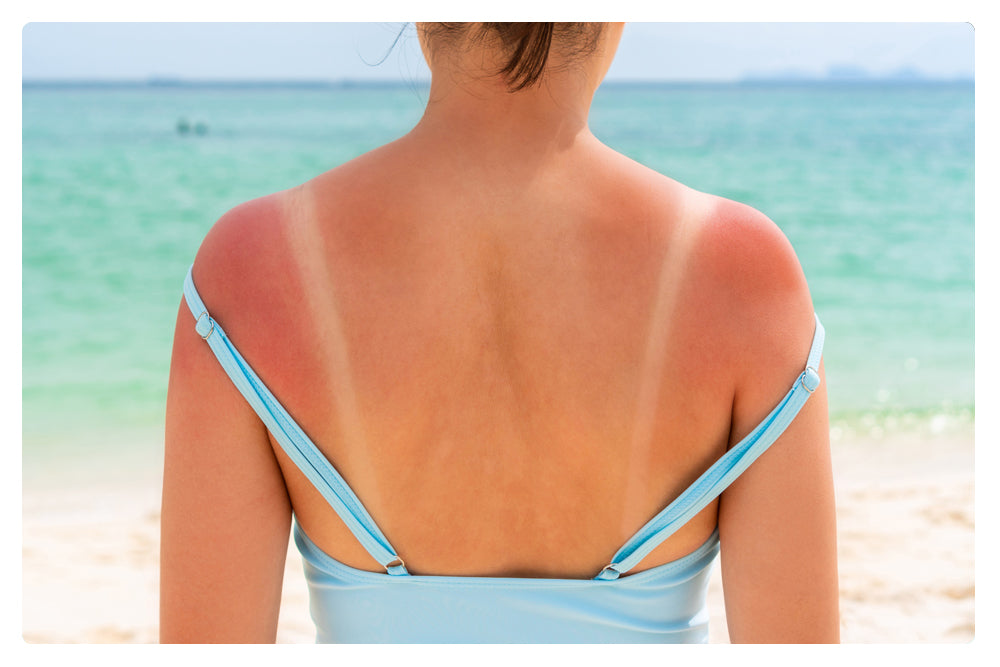We all love our vacations! Overall, beach and pool vacations remain a popular choice for many travelers globally due to their relaxation and leisure appeal. What we DO NOT LIKE is when a sunny day turns to painful horror when we sunburn.
When your skin is sunburned, it is actually undergoing a process of damage and repair. Below is a simplified explanation of why peeling occurs:
- Sunburn Damage: Ultraviolet (UV) rays from the sun cause damage to the DNA in your skin cells. This damage triggers an inflammatory response as your body tries to repair the affected skin.
- Inflammatory Response: The damaged skin cells release chemicals that cause inflammation, leading to redness, swelling, and pain. This is the body’s way of dealing with the immediate damage and protecting deeper layers of skin.
- Cell Turnover: To protect itself from further damage, the skin begins to shed the damaged outer layer. This process is called exfoliation or peeling. The damaged cells are replaced by new, healthy cells from the deeper layers.
- 4. Peeling: As the new skin forms underneath, the old, damaged skin peels away. This peeling process is the body's way of removing the damaged cells to prevent further harm and to facilitate healing.
Peeling is a natural part of the skin’s healing process after sunburn, but it is a good reminder to protect your skin from excessive sun exposure in the future!
To help protect your skin from peeling and promote healing after a sunburn, you can follow these steps:
- Cool the Skin: Take cool baths or showers to help soothe the burn. Avoid hot water, as it can worsen irritation.
- Moisturize Regularly: Apply a gentle, hydrating moisturizer to keep your skin hydrated. Look for products like TRISWIM Lotion that contain aloe vera, panthenol (provitamin B5) and glycerin, which can help soothe and repair the skin. TRISWIM Lotion was formulated for swimmers who have the driest skin on the planet, but TRISWIM Lotion is also a wonder at keeping sunburn peeling at bay! Not only does TRISWIM have aloe vera, panthenol and glycerin, it contains shea butter, coconut oil and magnesium. After a bad sunburn, using TRISWIM Lotion will decrease the likelihood that you will peel and feel pain from the burn by the next day after application. With a bad burn, keep applying the TRISWIM Lotion until you start feeling better.
- Stay Hydrated: Drink plenty of water to help your body stay hydrated and support skin healing from the inside out.
- Avoid Further Sun Exposure: Keep out of the sun until your skin has fully healed. If you need to go outside, wear protective clothing and use a broad-spectrum sunscreen with a high SPF.
- Wear Loose Clothing: Choose loose, breathable fabrics to minimize irritation and friction on the sunburned skin.
- Protect with SPF: Once your skin starts to heal, continue using sunscreen daily to protect the new skin from further UV damage.
- Seek Medical Attention if Necessary: If your sunburn is severe, with blisters or signs of infection (like increased redness, swelling, or pus), it is a good idea to consult a healthcare professional.
By taking these steps, you can help your skin heal more effectively and reduce the likelihood of peeling and discomfort.

0 comments